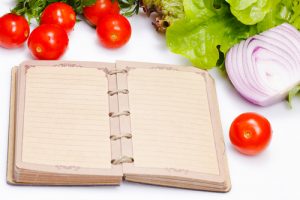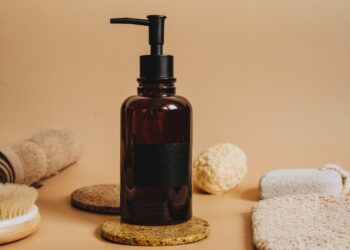Not until I went to college, lived on my own, attended parties, and lived on eating fast food alone did I understand why my mother was so strict when it came to eating a balanced meal and making sure we had our daily intake of fruits and vegetables. After a year of eating food that could be bought at the drive-thru, I had gained almost half of my weight when I first started my freshman year.
I was devastated. I didn’t realize I had gone out of control. I thought to myself, “What would my mother say?” Even I couldn’t imagine what she would do to me; after all those years of reminding me to give importance to my diet and then suddenly I totally disregard everything? I realized I had to put my life together and start living a better lifestyle, not only to lose weight but to also develop a better eating habit for a healthier body.
How did I start? Where did I start? Well, let me tell you, it wasn’t easy. Trying to change a lifestyle that you developed over a year can be quite overwhelming, especially if it made your life easier and fit perfectly into your busy schedule. In order to begin, I had to do research and find out which method worked best for me. One of my colleagues suggested I create a 1,500-calorie meal plan. At first, I said, “What? How am I going to evenly distribute a 1,500-calorie meal in one day? That’s impossible!” Well, I was wrong. It’s possible.
Make good food choices
In order to achieve your 1,500-calorie meal plan, you must promise yourself that you’ll start making good food choices. That means no more fast food, food loaded with cheese, smothered in sauce, cakes and pastries, and packaged food that contains ingredients that you can’t even pronounce.
I also made that same promise to myself, and it was the best thing I have ever done. Incorporating more fruits, vegetables, healthy nuts, fish, protein, and drinking more water into my diet has greatly helped me stay within my [thirstylink linkid=”9604″ linktext=”1,500-calorie limit” title=”1,500-calorie limit“] without feeling hungry or craving for more food. Better food choices means eating clean and transforming my body into the best shape of my life.
Write what you eat
Every person has his or her own style of learning, whether it’s visual, auditory, or kinesthetic. I’m one of those visual learners who can naturally memorize or learn information quickly once I see it in writing — I once passed an exam that I didn’t even know about until a few minutes before we had to take it just by reading through my notes and memorizing key words and key phrases.
Due to my meal plan, I had to develop a habit of writing down every single food or beverage that I consumed throughout the day: breakfast, lunch, dinner, and my in-between snacks. Beside each food, I listed down the serving size as well as the amount of calories it contained (with the help of my handy dandy phone application), and after every meal, I calculated how much I had already consumed in order to help me control my food selection for the remainder of the day, keeping in my 1,500 calorie meal plan.
Having a visual list of my food intake really helped me to gain a better understanding of my eating habits and food choices to determine whether I was actually eating healthy. Oftentimes, we think we are making good choices because we chose to eat a salad for lunch, but we somehow forget all the other in-between snacks that we snuck in to fill our cravings.
Learn to cook
What I fear most about eating out at restaurants is that I have no idea how they cook and prepare their food. I might be eating a salmon fillet with some sautéed vegetables thinking that it’s healthy. It’s fish, right? How can you go wrong? Well, it may look like an innocent meal, but it could have been cooked in a gallon of butter. Doesn’t sound so healthy after all, huh? So, what’s the solution? Learn to cook.
Some people say they don’t know how to cook; I say they are just lazy and don’t want to put any effort in learning or improving. If you knew how to grill a salmon fillet, you could have saved yourself from including that heart-stopping dish in your meal plan. Cooking your own food can slash maybe half of the calories (also lots of money) that you would normally eat when dining out. A great advantage of making your own food is you can plan ahead and pre-portion your meals for the entire week, controlling your calorie intake and choosing nutritious foods. Pre-portioning your meals also lets you plan your 1,500-calorie meal plan way ahead, saving you extra time.
Drink more water
Water has zero calories and zero fat, which makes it a perfect beverage to hydrate your body without adding more unwanted calories. Water is a good accompaniment to a healthy lifestyle; it flushes toxins, refreshes the body, makes you feel full faster, relieves constipation, and aids in the fat-burning process.
Although some people may not exactly enjoy the taste of water (count me in!), you can always make a few creative adjustments, such as adding some slices of fruits into your cold glass of water for added flavor as well as design.
In a span of 6 months, I had survived only eating the suitable amount of calories that I needed with my 1,500-calorie meal plan. I felt proud and amazed at how good I felt knowing that I was eating clean for a healthier body. There were days when I often struggled, but I never let those bad days ruin what I had already started. I was determined to continue with my meal plan because I believed that it’s an effective plan that works perfectly for me. The scale may not always tell the truth and I may not always like what it says, but I’m pretty confident that whatever my body tells me is good enough to eat and how much of it to eat will make me feel good about myself.








